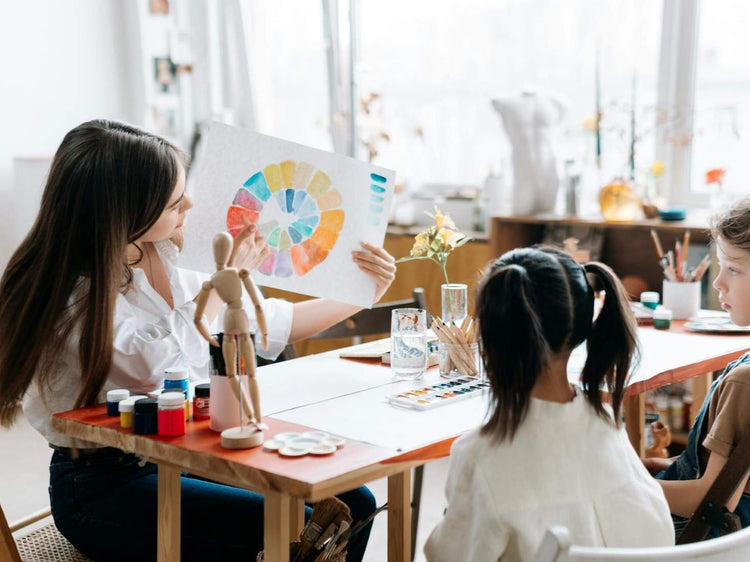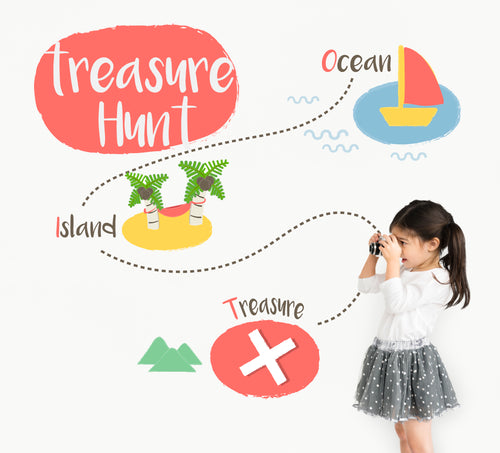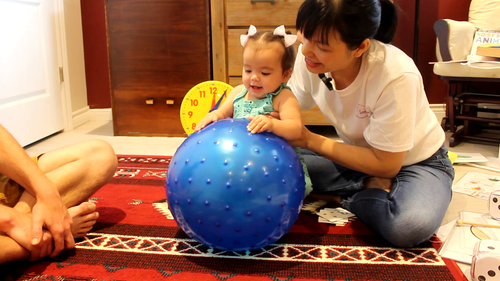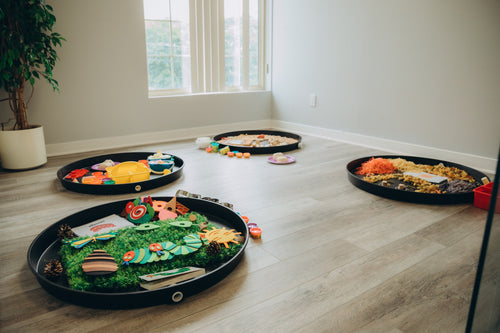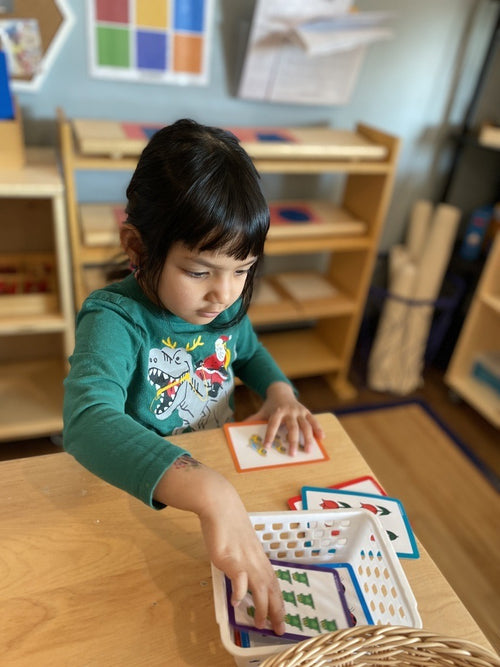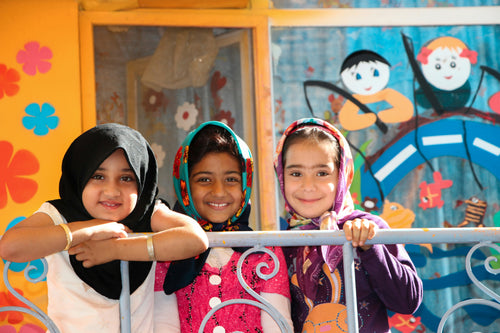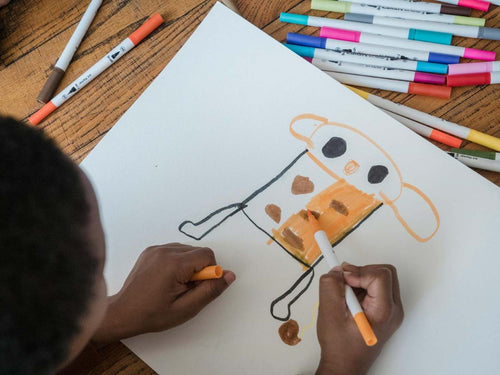Visual learning plays a crucial role in a child's early development, influencing how they perceive, understand, and interact with the world around them. From recognizing colors and shapes to interpreting symbols and images, children rely heavily on their visual skills during their formative years. These early experiences significantly shape their brain development, cognitive skills, and problem-solving abilities. By enhancing this ability, parents and educators can stimulate key areas of brain growth and cognitive function, building a strong foundation for lifelong learning.
Understanding Visual Learning
Visual learning is the process of acquiring information primarily through images, symbols, spatial understanding, and visual cues. In early childhood, this learning style is particularly significant, as children naturally depend on their visual senses to explore their environment and make sense of the world. Visual stimuli, whether in the form of colors, shapes, or objects, are among the first tools children use to understand their surroundings.
The visual system develops rapidly in the first few years of life, with experiences during this period leaving a profound impact on a child's cognitive abilities. By interpreting visual cues, children begin to form connections between what they see and the concepts they are learning. This relationship between visual learning and cognitive development strengthens the brain’s neural pathways, enhancing memory, focus, and comprehension.
Visual learning also encourages the development of observation skills. Through careful observation, children learn to recognize patterns, differences, and similarities in the world around them. This not only improves their understanding of their environment but also builds essential cognitive skills such as critical thinking and problem-solving. As children engage more in visual learning activities, their ability to observe and process information improves, further promoting brain development.
Learn more about sensory play benefits for children development here.

Enhancing Visual Learning Through Stimulating Observation Skills
Observation is one of the most important aspects of visual learning. By improving a child's ability to observe and interpret their surroundings, parents and educators can help them develop stronger cognitive skills and sharpen their mental abilities.
Techniques to Enhance Observation Skills
- Interactive Play: Games like matching cards, puzzles, and “spot the difference” challenges are excellent tools for stimulating visual observation. These activities encourage children to focus on visual details, fostering concentration and attention to detail.
- Storybooks with Illustrations: Reading illustrated storybooks to children is an engaging way to develop visual tracking, comprehension, and pattern recognition. By connecting the images in the book with the storyline, children strengthen their visual learning abilities while enhancing their imagination.
- Nature Walks: Taking children for walks in nature encourages them to observe their surroundings closely. Asking them to notice changes in their environment, such as the color of leaves, animal behavior, or seasonal shifts, promotes their observational skills while nurturing their curiosity.
Activities to Promote Visual Learning
- Art and Drawing: Art is an excellent way for children to express what they observe in the world around them. Allowing them to draw or paint based on what they see strengthens hand-eye coordination, spatial awareness, and creativity. Visual learning through art encourages children to replicate the images they see in their minds.
- Memory Games: Games that require children to remember and recall specific visual details, such as memory cards or Simon Says, can improve their visual memory. These activities help enhance focus and sharpen their observation skills over time.
- Shape and Color Sorting: Activities where children must sort objects based on their shape or color help to develop visual discrimination. These sorting activities teach children to differentiate between visual characteristics and improve their ability to categorize information based on visual cues.
Developmental Benefits
As observation skills improve, so too does a child’s ability to understand the world around them. Strong observation skills, developed through visual learning, contribute significantly to brain development by enhancing the brain’s capacity to process and retain information. These enhanced neural pathways foster better focus, critical thinking, and communication skills, both in academic and social settings.
Long-Term Benefits of Nurturing Visual Learning
- Enhanced Memory: Children who engage in visual learning activities tend to have improved memory retention, as they regularly practice recalling images, shapes, and visual patterns. This improved memory can contribute to academic success later in life.
- Improved Problem-Solving Skills: Visual learning encourages creative thinking and the ability to see connections between different objects and ideas. This flexible thinking enhances problem-solving skills and boosts adaptability in new situations.
- Stronger Communication Skills: Visual learners often excel at interpreting non-verbal cues, such as body language and facial expressions, helping them become more effective communicators in social interactions.
- Adaptability: Children exposed to diverse visual stimuli become more adaptable learners, capable of understanding new concepts more quickly. This adaptability is key to succeeding in dynamic, changing environments both academically and socially.

Practical Tips for Parents and Educators
Incorporating visual learning into daily routines doesn’t have to be complicated. Parents and educators can integrate visual learning techniques into both structured activities and informal moments, helping children strengthen their observation skills without added stress.
Strategies to Support Visual Learning
- Create a Visually Stimulating Environment: Surround children with colorful objects, toys, posters, and learning materials that engage their visual senses. Visually stimulating environments encourage children to explore and observe their surroundings actively.
- Use Visual Aids in Teaching: Incorporating visual aids such as charts, graphs, and flashcards into lessons can make learning more engaging for children. Visual aids help reinforce concepts and support understanding through visual cues.
- Observation Games: Play observation games like “I Spy” or scavenger hunts that encourage children to look closely at their environment and identify specific objects or details. These games are fun and offer significant cognitive benefits.
- Integrate Technology Thoughtfully: Educational apps and games designed for visual learning can be useful tools when used in moderation. Look for apps that encourage interaction, creativity, and problem-solving through visual challenges.
Resources and Tools for Visual Learning
- Visual Learning Apps: Interactive storybooks, drawing games, and memory apps are great digital tools for enhancing visual learning. These apps often feature colorful, engaging designs that captivate children's attention.
- Educational Toys: Shape sorters, building blocks, and memory games are excellent physical tools for supporting early brain development through visual learning. These toys encourage creativity, spatial reasoning, and problem-solving.
- Storybooks and Flashcards: These resources are invaluable in developing observation skills and teaching children new concepts. Flashcards can also help children associate words with images, boosting language development alongside visual skills.
Get your right brain training free printable flashcards here.
Visual learning is a vital component of early childhood development, influencing cognitive growth, memory retention, and problem-solving abilities. By fostering a supportive environment that encourages observation and visual engagement, parents and educators can give children the tools they need to thrive both now and in the future.
Nurturing visual learning from an early age offers long-term benefits that extend far beyond childhood. Children who develop strong observation and visual processing skills are better prepared for the complexities of academic learning, social interaction, and creative problem-solving, laying the foundation for a lifetime of success.
Smartizen offers innovative programs for kids that integrate visual learning to enhance cognitive development and boost creativity. Through techniques like flashcard learning and interactive activities, we stimulate both sides of the brain, helping children improve memory, concentration, and problem-solving skills. Our Whole-Brain Boosting approach nurtures a well-rounded learning experience, ensuring kids thrive academically and emotionally. Book a free trial class with us here.

